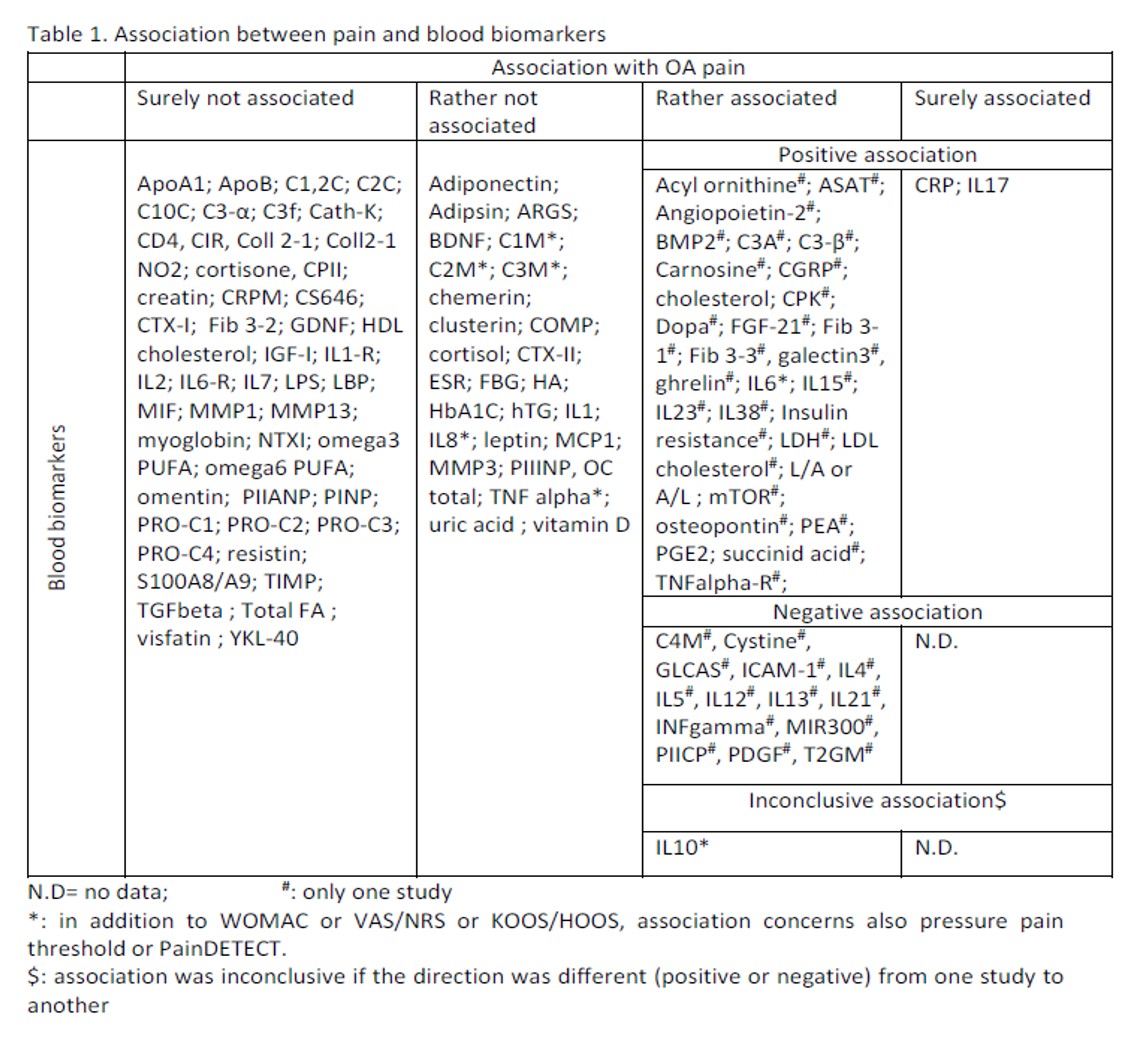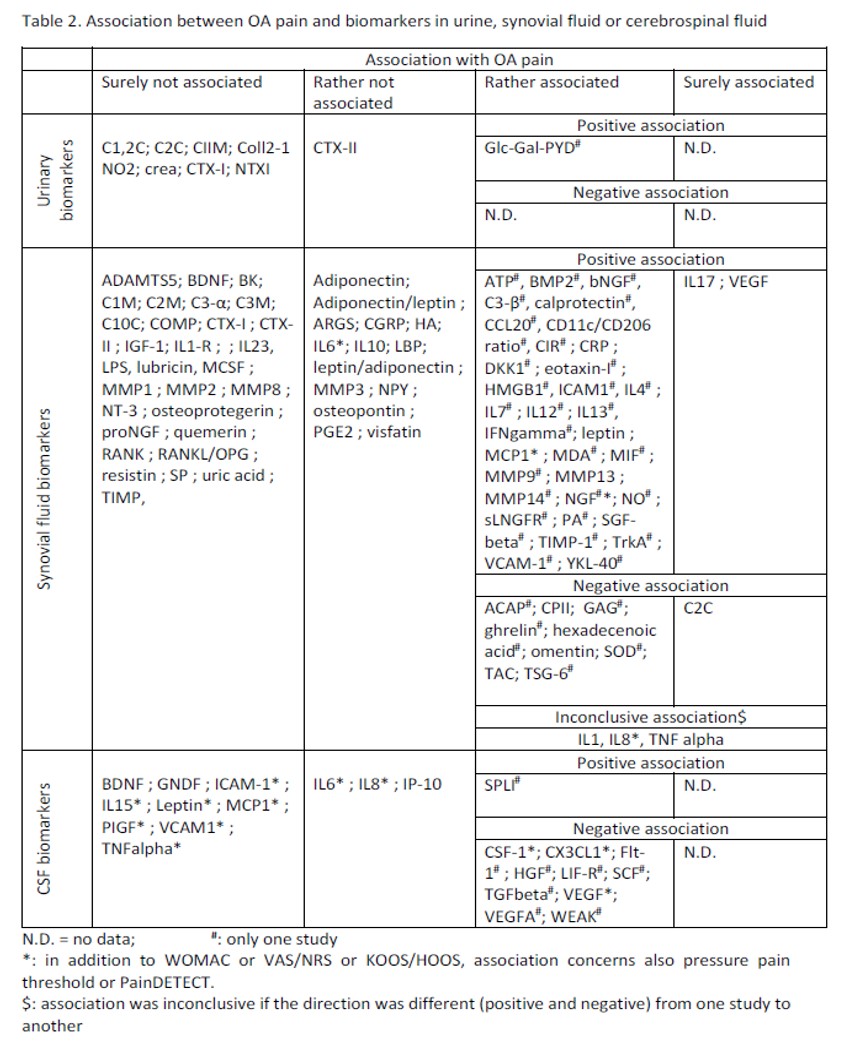Session Information
Session Type: Poster Session C
Session Time: 10:30AM-12:30PM
Background/Purpose: Chronic joint pain is a major factor driving poor quality of life in people with osteoarthritis (OA). A better understanding of the complex mechanisms underlying OA pain is essential to provide novel solutions for people with persistent pain. The multinational, multidisciplinary Going inside Osteoarthritis-related Pain Phenotyping (GO-PAIN) working group aims to delineate state-of-the-art knowledge about OA-related pain phenotyping and to expand and deepen our understanding of OA-related pain.
Methods: A systematic literature review (SLR) was conducted, utilizing databases including PubMed, Embase, Scopus, Web of Science and the Cochrane Library, up to October 2023. We extracted pain scales and soluble biomarkers which were separated into blood, urine, synovial fluid, and cerebrospinal fluid biomarkers. The relationship between pain measures (General VAS, WOMAC, HOOS or KOOS, AUSCAN, painDETECT or pain pressure threshold) and biomarkers was first defined as “associated” or not according to statistical significance of correlation or regression coefficients. The categorization of biomarkers as either “surely associated”, “rather associated” or “not associated” was based on the quality of available evidence. We used “surely” when all the studies gave the same results. “Rather” was used if results were found only in one study or if the direction of the association (positive or negative) was different from one study to another. The choice between “rather associated” and “rather not associated” considered the number of studies, the samples size of patients within each study, and the strength of correlation. Results of the classification were independently verified by two reviewers.
Results: Exploring the five databases yielded a total of 26,663 citations. Upon reviewing the title, abstract, and full text, we restricted the selection to 248 papers that were deemed relevant. The results on blood biomarkers are presented in Table 1. Serum CRP and IL17 were the 2 blood biomarkers surely associated with pain. In Table 2, urinary CTX-II was rather not associated with pain. In synovial fluid, IL17 and VEGF were surely and positively associated and C2C negatively associated with pain intensity. No CSF biomarkers were surely associated with pain but VEGF, CSF-1 and TGFbeta were rather associated (with a negative correlation).
Conclusion: This SLR identified several biomarkers across different body fluids that were associated with pain in OA. While some biomarkers were not significant, CRP and IL17 warrant further investigation. Ultimately, a panel of biomarkers may offer more relevant insights than individual markers.
To cite this abstract in AMA style:
Mathieu S, Kuhi L, Conaghan P, Eijkelkamp N, Henrotin Y, Kosek E, Schaible H, Mobasheri A, Kisand K, Sellam J. The Relationship of Soluble Biomarkers to OA Pain: A Systematic Literature Review [abstract]. Arthritis Rheumatol. 2024; 76 (suppl 9). https://acrabstracts.org/abstract/the-relationship-of-soluble-biomarkers-to-oa-pain-a-systematic-literature-review/. Accessed .« Back to ACR Convergence 2024
ACR Meeting Abstracts - https://acrabstracts.org/abstract/the-relationship-of-soluble-biomarkers-to-oa-pain-a-systematic-literature-review/


